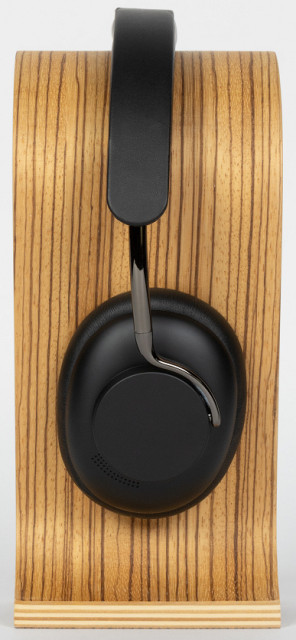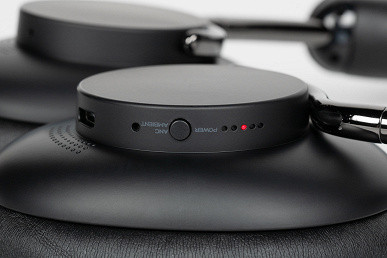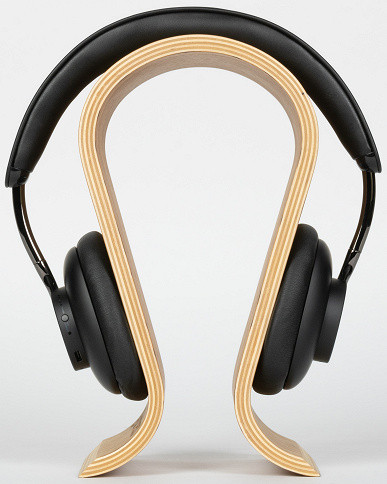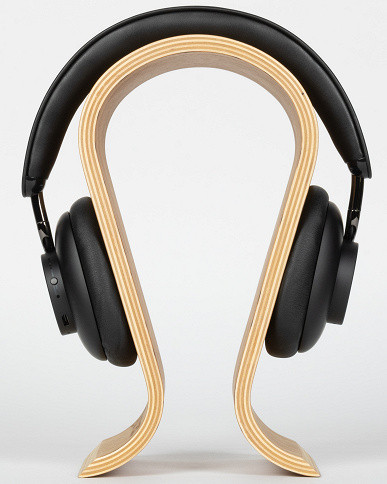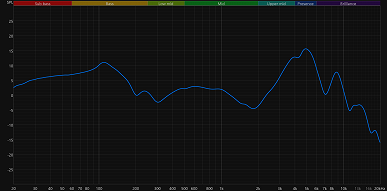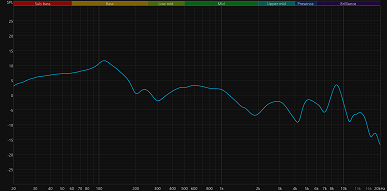In our search for high-quality and affordable full-size headphones, we started with the QCY H2 model, the price of which was very low, but the sound turned out to be unacceptable. We later tested the QCY H3 ANC, which, although slightly more expensive, offered better sound quality and active noise cancellation. However, to fully satisfy the needs, the search had to continue.
We paid attention to the Commo One headphones, which, at a cost of around $30, offered a nice design and sound, but without active noise cancellation. Having increased the budget to $55-60, we turned our attention to the JBL Tune 770NC with good noise reduction and specific sound, customizable through the application.
Now our next step is the KZ H10 headphones from the KZ brand, known for its expertise in the audio industry. These headphones offer 40mm titanium diaphragm dynamic drivers, hybrid noise cancellation, and comfortable ear cushions. Let's see if they can be the perfect choice in our search for over-ear headphones.
Specifications
| Declared frequency range | 20 Hz — 20 kHz |
|---|---|
| Impedance | 32 Ohm |
| Sensitivity | 116±3 dB |
| Speaker | ∅40 mm |
| Connection | Bluetooth 5.0, wired (3.5 mm minijack) |
| Supported codecs | SBC, AAC |
| Multipoint | No |
| Control | mechanical buttons |
| Noise suppression | There is |
| Battery capacity | 500 mAh |
| Charging connector | USB-C |
| Battery life | up to 30 hours |
| Fast charging | not declared |
| Dimensions | 175×196×85 mm |
| Weight | 282 g |
Packaging and accessories
KZ H10 headphones are supplied in an elegant dark gray box, on which an image of the device and its main characteristics are printed in black paint. The packaging looks very stylish and minimalistic, not inferior to the packaging of flagship models of famous brands.
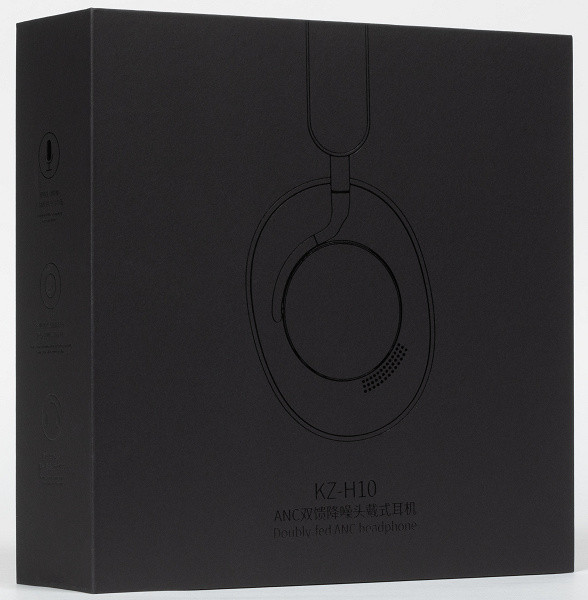
The box lid is held in place by magnets and can be easily folded back. Underneath there is a transport case in which headphones and other accessories are placed.
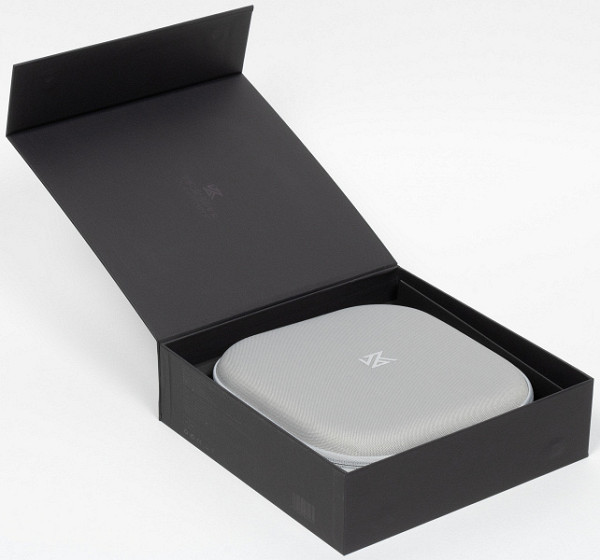
The package includes the headphones themselves, a USB-A to USB-C cable for charging, and an audio cable with two mini-jacks at the ends for a wired connection to the source. The package also includes instructions in Chinese and English.
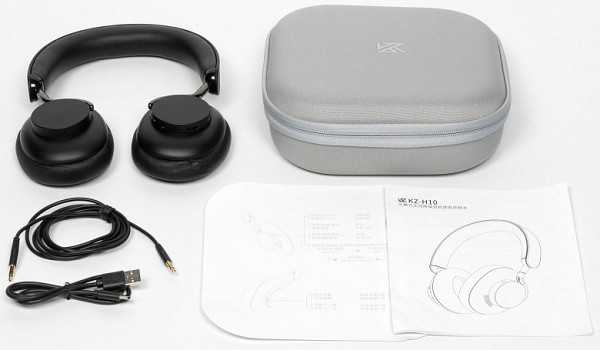
The case is made of synthetic fabric with thick inserts that will reliably protect the headphones when carried in a backpack or bag.
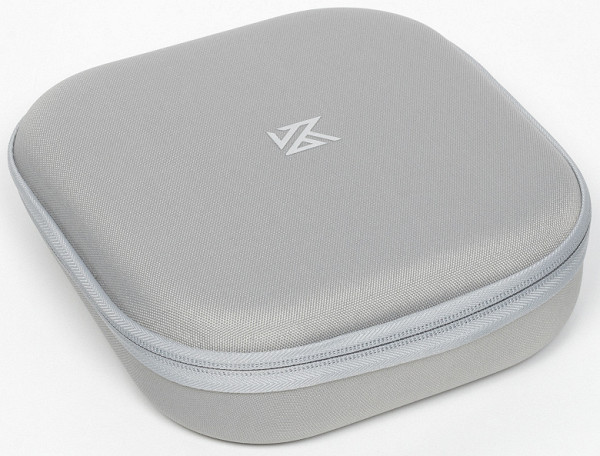
The cables can be stored in a special pocket, and the headphones themselves are placed in the main compartment of the case. They do not fit in there very freely, so you will need to find the optimal position for them. At the same time, they are securely fixed and do not dangle inside the case.
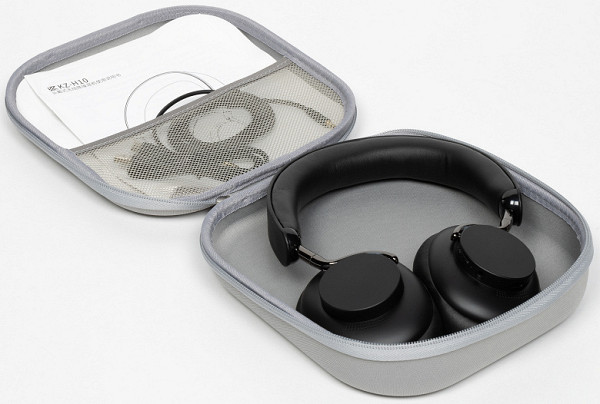
The charging cable is made at an average level of quality, it will undoubtedly cope with its task. Its length is 60 cm, which is quite enough for comfortable use.

The audio cable is surprisingly long at 150cm, which can be unnecessarily long if the audio source is in your trouser pocket. The cable is made of high quality: it is not too thin, quite flexible, and its coating is pleasant to the touch. However, an important point is that there is no microphone on the cable. The connectors are three-pin, which means that with a wired connection we will not be able to use the built-in microphone on the headphones. This is definitely a misunderstanding.
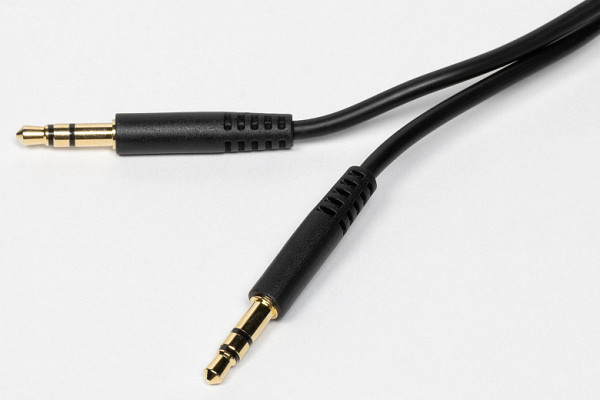
Design and construction
The headphones are available only in classic black, their design is pleasant and follows the best traditions of “premium” models. Visually, they are reminiscent of the Bowers and Wilkins P5, but without directly borrowing elements, which eliminates criticism. The design of the headphones is very good: the minimalistic style without unnecessary decorative elements, including the absence of visible logos, gives them an elegant look.
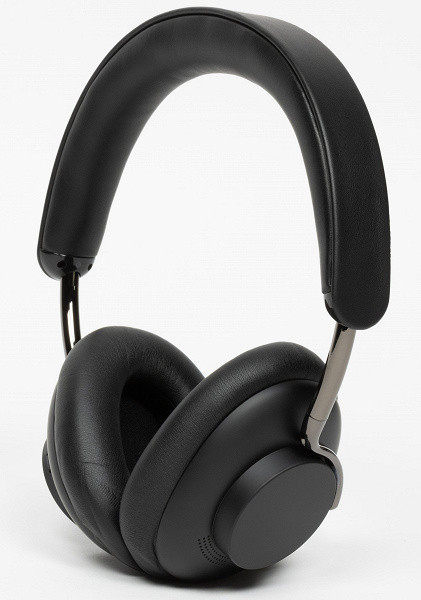
The earcups can be rotated 90° for a comfortable fit and can be worn around the neck when not in use. At the bottom of the right earcup there are connectors for connection and mechanical buttons for controlling the headphones. Also on the bottom of both cups there are microphones for voice communication and active noise reduction.
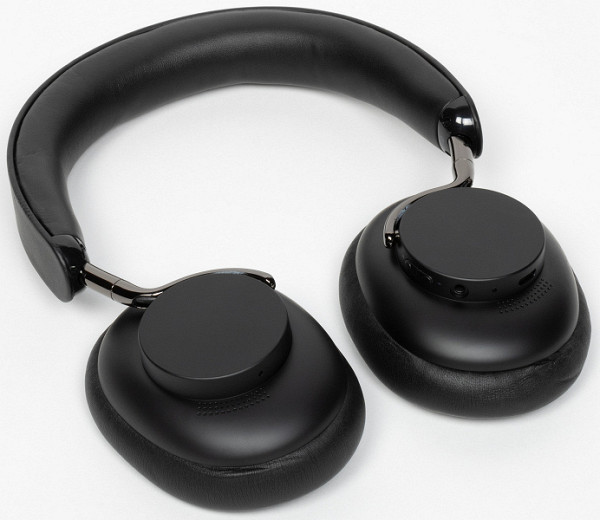
The metal plate that makes up the headband of the headphones inspires confidence with its reliability during operation. It is covered with “artificial leather”, pleasant to the touch, but susceptible to slight damage. For example, it can be scratched by the zipper on the case. Therefore, it is important to monitor its safety and try not to throw the headphones into a bag without the case that comes with it.
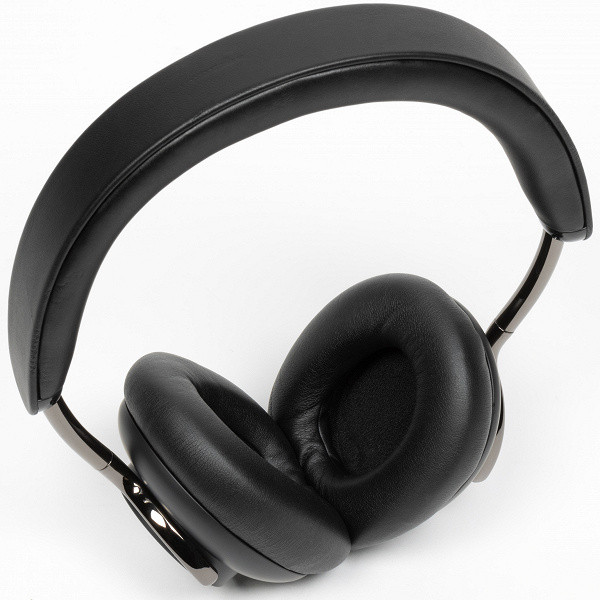
The outer side of the cups is covered with matte black plastic, which looks very stylish, but it tends to collect various contaminants — from fingerprints to dust. It is quite difficult to clean it, so it is important to monitor not only the condition of the skin, but also the cleanliness of the plastic.

The glossy metal elements for fastening the cups, apparently, were intended as a design element that was supposed to add a touch of originality and “premium”. However, they tend to get very dirty and become more noticeable than the plastic parts of the headphones. However, it is not difficult to clean them from dirt.
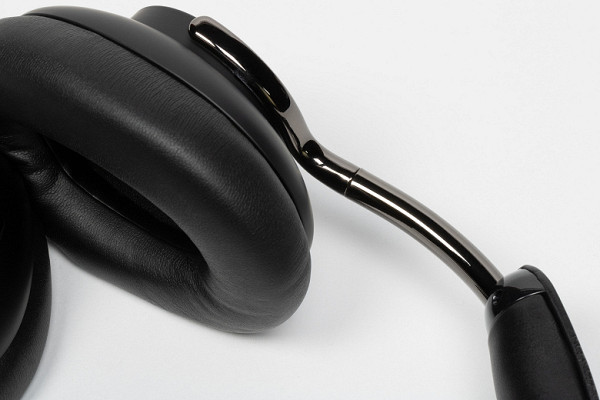
The inside of the headband is equipped with a soft pad filled with foam material, ensuring comfortable contact of the arc with the head.
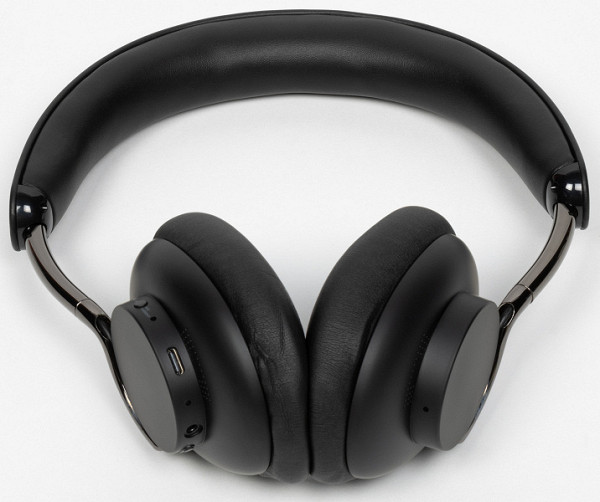
The earcups can be pulled out from the headband, but the adjustment mechanism functions rather inconveniently — with jerks, unexpected fixation in the middle position and unpleasant sounds during the process. These details remind us that the headphones belong to the budget segment, despite the fact that their cost is not so low. Attention to the materials used and such aspects plays an important role in creating «premium» models and partly determines their price.
According to the instructions, the ear pads should be removable. However, either there is an error in the instructions, or removing them requires such efforts that can damage the design of the headphones. In any case, given their inexpensive price, replacing the ear pads most likely will not be an economically justifiable undertaking. Therefore, it is better to leave them in place. In addition, the ear pads are pleasant to the touch thanks to the leather covering and soft inner filling that perfectly retains their shape.
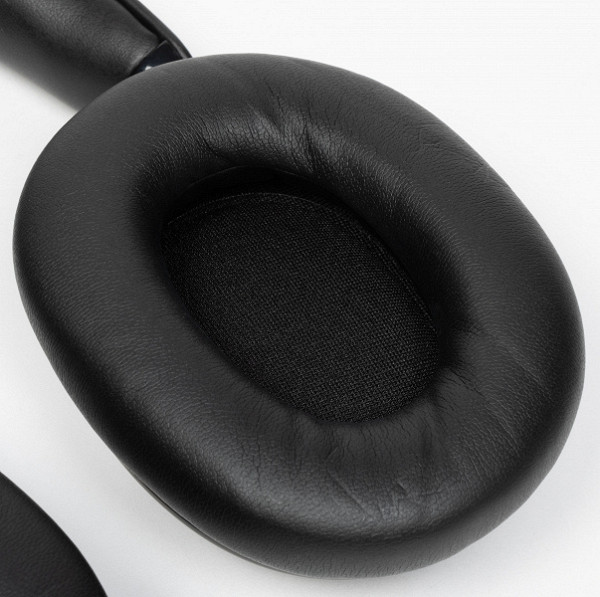
Connection
Connecting headphones via wire is as simple as possible. The ends of the cable are identical, so just connect one end to the headphone jack and the other to the sound source. The headphones support wired connections in both passive and active modes. In active mode, the user has access to active noise reduction and “sound transparency” modes.
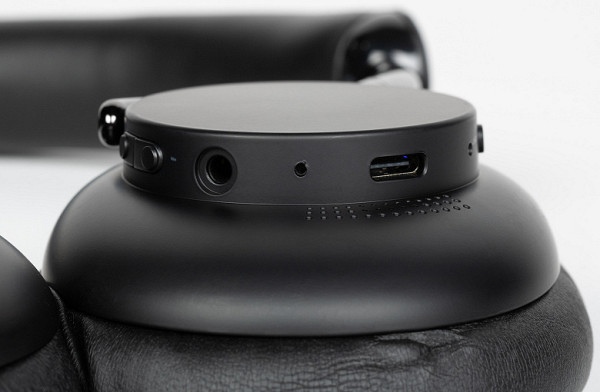
Wireless connection is carried out in a standard way: after turning on the headphones, they start beeping and automatically try to connect to already known devices. If no suitable devices are found, the headphones activate pairing mode. An important drawback of this model is the lack of multipoint support, which means it is impossible to simultaneously connect to a PC and a smartphone, which can be significant for many users.
Using the Bluetooth Tweaker utility, we received a complete list of supported codecs and their modes. In this case, only two codecs are supported — SBC and AAC. This can limit the sound quality, especially for those who are used to higher standards such as aptX or LDAC. Compared to other similarly priced models on the market that support a wider range of codecs, this may be a drawback for potential buyers.

It is important to note that the maximum Bitpool parameter for the SBC codec is set at 52, which corresponds to the recommended High Quality profile with a level of 51. This allows the codec to work at its maximum capabilities, despite its not the highest reputation. Such parameters can provide very good sound quality. As for AAC, the upper bitrate limit is set at 264 Kbps, which is slightly higher than the standard 256 Kbps. This data suggests that even budget headphones have the potential to deliver decent sound.
It is also worth noting support for Bluetooth version 5.0, although at the time the headphones were released, Bluetooth v5.3 was already actively used. During testing, we did not notice any desynchronization in games or when watching videos. The only slight discomfort occurred when playing Call of Duty Mobile, but it was resolved by switching to the SBC codec. The quality of communication also turned out to be at a high level — the headphones were not subject to stuttering even in conditions of increased noise.
Control
The KZ H10 headphones are controlled via physical buttons, which evokes only positive emotions. The developers clearly set themselves the goal of saving money, so the use of expensive sensors was not intended here. However, the buttons work reliably and efficiently. They press with a pleasant tactile response and optimal force, although their size could be increased for a more comfortable feel.
On the right cup there is a universal key that performs many functions. With a long press, it turns the headphones on and off; with a short single press, it controls playback and answers calls. A double press toggles between noise reduction and audio transparency modes, and a triple press brings up the voice assistant. Next to the button is a small LED indicator that displays the device status and battery charge level.
On the back of the ear cup there are “swings” for volume control. A single press allows you to adjust the volume, and a double press allows you to switch tracks. In general, the controls are simple and quite comfortable, although it will take a little getting used to. However, it is worth noting that there are more convenient options. The headphones provide information about their status through voice messages in English; it is impossible to change the language of the messages, but the choice of five or six messages makes them easy to understand — this is already a good plus, especially if Chinese is not needed.

Exploitation
Let's talk about the comfort and reliability of the fit. The KZ H10 stands out due to its comfortable fit and secure hold, making it superior to the previously reviewed models. The ear pads have a pleasant coating and soft inner material, providing a tight and comfortable fit. This guarantees a good level of passive noise insulation and minimizes sound leakage unless the volume is turned up to maximum. The size of the inner ear pad opening is 60x40 mm, which is larger than that of Commo One (60x25 mm) and JBL Tune 770NC (54x37 mm), which significantly affects comfort. The KZ H10s don't put undue pressure on the ear, although slightly larger ear pads would be nice. The materials breathe well, making them comfortable even in hot weather, although not as good as the JBL Tune 770NC. The KZ H10 headband provides a fairly secure fit on the head, suitable for active movements such as running or playing sports. Adjustable headband size allows you to customize the fit for different head sizes. Overall, the KZ H10 is a comfortable and secure fit, despite some features that should be taken into account when choosing.
As mentioned earlier, the KZ H10 headphones have a very high level of passive sound isolation, which reduces the need for frequent use of active noise cancellation. The noise reduction mode itself is effective at the middle class level, not inferior to other models in the budget segment. There are a few oddities, however: for example, the noise canceling system reacts to wind in an unusual way, causing temporary «rustling» and changes in the low-frequency range when there is a sudden wind flow or head movement. This makes using noise cancellation outdoors not very comfortable.
Instead, we recommend using the «audio transparency» mode, which allows you to hear surrounding sounds through the headphone microphones. In the KZ H10, this mode broadcasts environmental sounds, but not as loudly as some other models. This allows you to hear your surroundings, such as public transport announcements, while maintaining some control over what is happening around you.
Microphone for voice communication
As mentioned earlier, the KZ H10 headphones do not have a microphone on the cable, which means you cannot use the headphones' built-in microphone with a wired connection. This may be a disadvantage for some users, since a wired connection is often used as a backup option when the device is completely drained or for better sound quality when connected to a PC.
The second option is especially relevant, since a microphone on the cable would help in using it for calls or recording audio on a computer, especially considering that many laptops already have built-in microphones. However, some users prefer to use a symmetrical cable without additional thickening.
As for the microphone built into the headphones, the manufacturer does not provide much information about its characteristics and capabilities. This makes it interesting to carry out tests and measurements of its performance, such as frequency response (amplitude response) analysis, to evaluate its performance under different usage conditions.
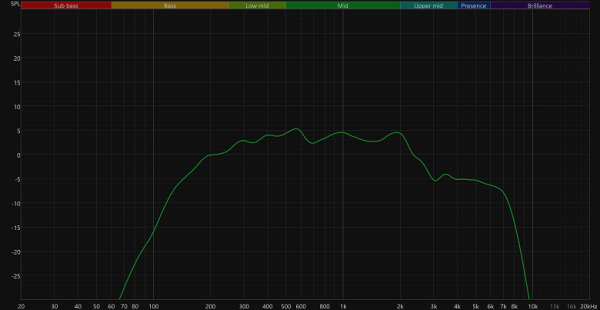
An adult male's voice typically has a fundamental frequency of 85 to 155 Hz, while a woman's voice typically has a fundamental frequency of 165 to 255 Hz. However, voice transmission uses frequencies between 300 and 3400 Hz, known as “voice frequencies” because the formants responsible for speech intelligibility are found in this range. Low frequencies are usually cut to avoid transmitting unwanted sounds such as the rumble of engines or crowd noise.
The frequency response of the graph shows a cutoff in the low-frequency range below 200 Hz, which is logical. Mid frequencies are transmitted smoothly, which is a good result. However, the high frequencies responsible for speech detail are reduced, which can cause the voice to sound boomy and reduce intelligibility.
Testing revealed that the voice sounded a bit boomy and less detailed than expected. However, the lack of harshness makes the sound less tiring for the interlocutor. For simple calls or recording messages, this sound is quite suitable, although for long online conferences it is better to consider professional solutions with higher detail and noise reduction.
The microphone is located at the bottom of the headphones, which allows extraneous sounds to penetrate the recording. It's not perfect, but for a budget headset it's an acceptable result. It should be noted that the manufacturer did not announce active noise reduction during calls, but the microphone copes with voice recording under normal conditions, although background noise can be heard.
Autonomy and charging
The manufacturer promises up to 30 hours of headphone operation without the noise reduction system turned on and up to 25 hours with it turned on. This result can be called «very average» at the moment, considering that we have seen models with up to 60 hours of battery life, such as the QCY headphones, and even up to 95 hours on the Commo One. Of course, actual autonomy is often lower than declared, but still the level of autonomy of these models is impressive. It is important to note that the difference between 3 and 6 hours of battery life, for example for TWS headphones, significantly affects the comfort of use.
However, the difference between 30 and 90 hours is no longer so critical, although the ability to charge the device once a month rather than every week is a nice bonus. It’s just important not to miss the moment when you need to connect the charger — fortunately, most modern devices show the battery charge level quite accurately. The headphones also warn you about the need to charge some time before they are completely discharged.
Typically, the autonomy declared by the manufacturer is achievable under certain “ideal conditions”, which they often do not specify. Therefore, it is always interesting to check how long the device will actually work in our test, which is as close as possible to real-life conditions of use. We use white noise for testing at a sound pressure level of around 95 dB to evaluate the real autonomy of playing music or other audio content.
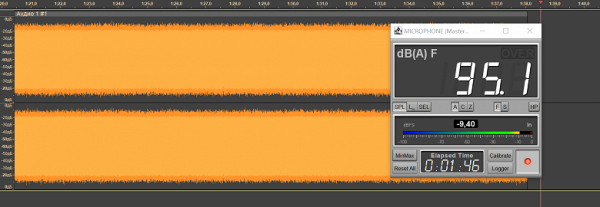
Without the noise reduction system turned on, the headphones worked even longer than promised — about 33 hours. And with the system turned on, the operating time was slightly shorter — about 23 hours. In any case, these are excellent indicators that ensure comfortable use of the device.

It takes about an hour to fully charge the headphones, and fast charging was not announced. But this did not stop us from checking its availability. After 10 minutes of charging, the KZ H10 worked for almost 6 hours — we can confidently say that fast charging is available. This way, even if they run out of charge unexpectedly, you can plug them into the charger for just 10 minutes to continue listening to music for the rest of the day.
Sound and frequency response measurements
Let's discuss in more detail the sound of the KZ H10, potential «budget kings». Let's start with a wired connection in passive mode. There are several points here that deserve attention: the promised emphasis on the low-frequency range is present, but the bass does not sound too boomy, and the mids, although set back, still remain understandable. The high-frequency range is not very expressive, but has no problems with “sand”, sibilance and other characteristic artifacts. If you like bass-focused headphones and listen to music with strong bass lines, then the KZ H10 may be an enjoyable experience for you. For clarity, let's use the frequency response graph.
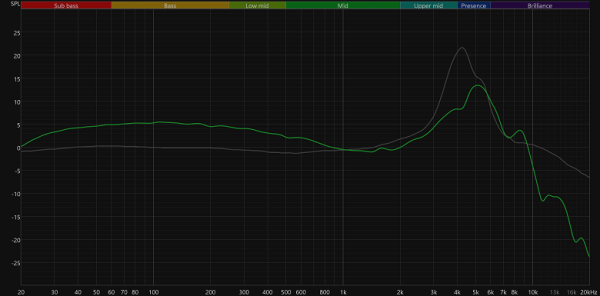
The frequency response graph is shown against the background of the target curve used, adapted for a specific device similar to the “Harman curve” from Harman International under the direction of Dr. Sean Olive. This curve is designed to compensate for different people's individual perceptions of sound, resulting in a neutral, balanced and natural sound experience that has been appreciated by a wide variety of subjects. Comparing the resulting graph with the target curve helps to clearly and fully illustrate the subjective listening experience.
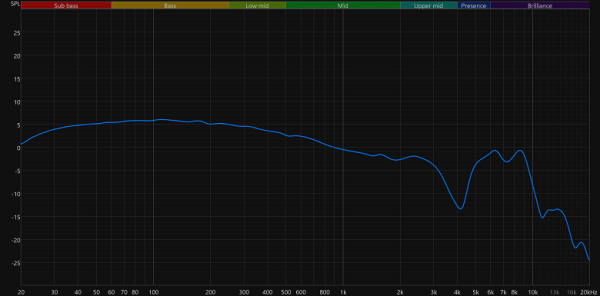
A lot of bass, a slightly lost midrange, a very restrained high-frequency register — everything looks exactly as it sounds. Overall, not bad. But this is the last good news for today. We try to turn on the headphones and again look at the graph, with which something very strange is happening, to say the least. Something is clearly going wrong with our “budget kings”.
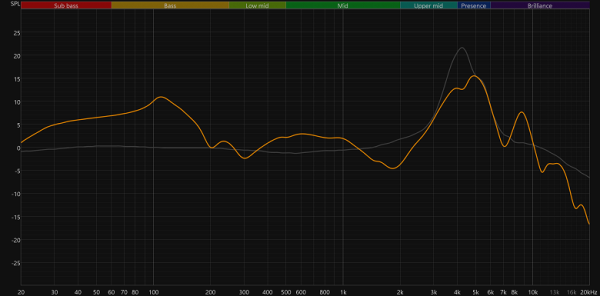
Let us again compare the resulting graph with the target curve for better clarity. There is a noticeable emphasis on low frequencies, resulting in boomy and unnatural bass that overloads the lowest parts of the range. The mids sound uneven, with bright highlights that are out of balance. High frequencies remain unclear and almost unnoticeable against the background of other components. In general, the sound quality leaves much to be desired. We've previously observed the potential for these headphones to sound normal, which could indicate interference from the onboard DSP altering the sound profile. However, the purpose or necessity of such changes remains unclear.
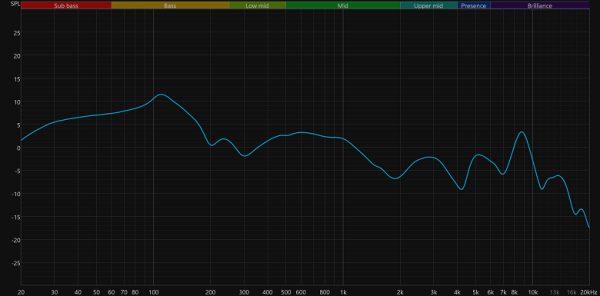
Sometimes manufacturers enhance the bass to compensate for its loss when the active noise reduction system is activated. However, in this case, the low frequencies do decrease slightly, but the overall picture remains almost unchanged.

What's especially disappointing is that when using a wireless connection, which is generally preferred by listeners, the sound profile remains virtually unchanged. On the left is the base graph, on the right is compensated in accordance with the target curve. Enabling ANC has the same effect as in the previous illustrations.
To be honest, based on manufacturers' descriptions and listener reviews, we expected more from the KZ H10's sound. Much more. Unfortunately, the device did not live up to our hopes at all.
Comparison with other models
As originally promised, let's compare the device under test with those models that previously participated in our search for good and affordable headphones. Let's start with QCY H2 — the most budget and least pleasant sounding model. In favor of the QCY H2, we can say that their price is minimal — ultra-budget headphones that can be purchased for a couple of thousand or even cheaper. However, the sound quality in them leaves much to be desired.
The KZ H10s sound, of course, a little better — they have better midrange readability and some detail in the high-frequency range. However, the very fact of comparing the sound of headphones with such a significant difference in price speaks for itself. It is important to note that the KZ H10 looks more attractive, its equipment is richer, and the fit is much more comfortable.

Here are the QCY H3 ANC, which cost about 3-4 thousand rubles, and sound a little better than the headphones we tested. Now the difference in price is two times or more explained not only by more comfortable fit, equipment and appearance, but also by sound quality. The QCY H3 ANC has an almost parity sound level, if not to say that they are a little ahead thanks to a more balanced emphasis on the low frequencies and a smooth midrange with better detail. In addition, QCY headphones have a sound tuning application, where you can slightly adjust the sound profile. While the app isn't perfect, it's still there and provides some customization options.
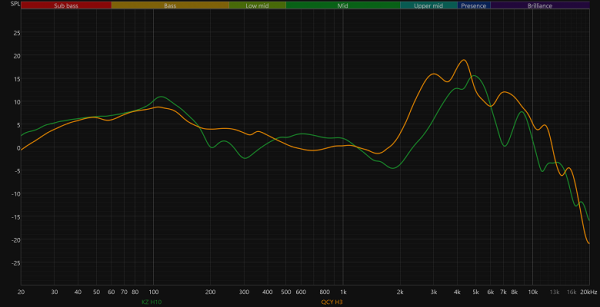
Commo One, which costs about 5 thousand rubles, sounds frankly better. The emphasis on «deep bass» can add a bit of boominess, but this sound has its fans. At the same time, the midrange remains readable, and the high-frequency range is present in place. Headphones from Yandex.Market look almost better, they also benefit in terms of materials and build quality. Plus, they have attractive packaging. There is no noise reduction function, but they have very high autonomy.

JBL Tune 770NC — The sound is superior in all aspects, there is excellent software that allows you to adjust the emphasis on the bass. The exterior may not be as impressive, but the quality of materials and workmanship is impeccable. However, they do not have the most comfortable fit, while the KZ H10 is comfortable and secure. In this aspect, the KZ H10 outperforms all the models reviewed.
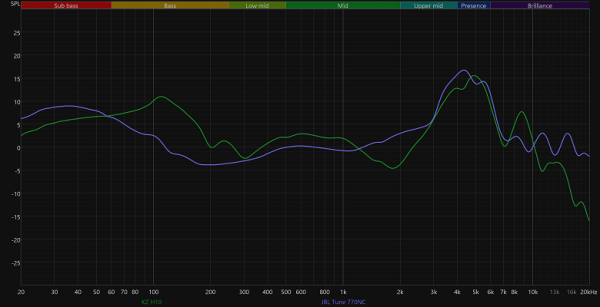
Results
The KZ H10 does not live up to our expectations, which is very disappointing. Despite their potentially attractive appearance and the reputation of the Chinese manufacturer, testing experience revealed significant shortcomings. The look may be premium, but the materials aren't exactly high quality and the headband length adjustment leaves a lot to be desired. Noise cancellation is effective but inconsistent in windy conditions. The microphone is good, but does not work with a wired connection. The lack of a recent version of Bluetooth, multipoint and configuration software are also significant disadvantages. The main problem is the sound quality: with a passive connection the sound is decent, but with a wireless connection the sound becomes simply bad, especially in comparison with more affordable models. So the search continues.

